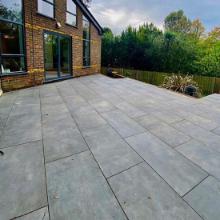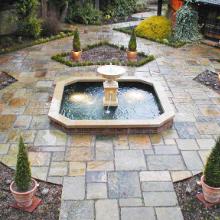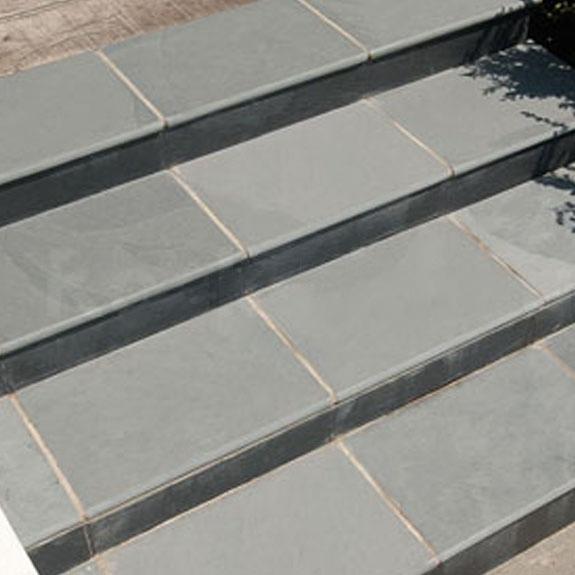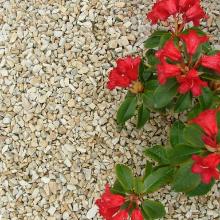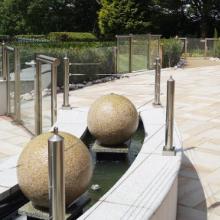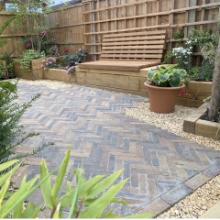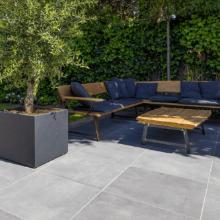At Rock Unique, we’re often asked what makes one type of natural stone different from another.
While we’re not geologists, we’ve worked with stone for many years and have come to understand how each type forms — and why it behaves the way it does when used in paving, cladding, or interior design.
Here’s a quick guide to the most common natural stones you’ll come across.
🏖️ Sandstone
Sandstone is made up of tiny sand-sized particles — usually rounded grains of quartz, but sometimes containing feldspar or other rock fragments.
It’s a sedimentary rock, meaning it forms when layers of sand build up and compress over time. Sandstones are formed in riverbeds, beaches, deserts, and shallow seas.
Sometimes, you can even see the preserved shapes of old sanddunes in the stone itself.
Key features:
- Warm, natural tones
- Slightly textured surface
- Suitable for patios, paths, and traditional landscaping
- Durable
- Low porosity (sandstones suitable for paving)
🌊 Limestone
Limestone is mostly made from calcium carbonate — often from the remains of ancient marine organisms.
It forms mainly in warm, shallow seas, or occasionally in tropical lakes where mineral-rich water rises to the surface.
Because it’s soluble, limestone is easily shaped by water, which is why caves and sinkholes often form in limestone regions.
Fossils are common, giving many limestones a beautiful natural pattern.
Key features:
- Classic, elegant look
- Can contain visible fossils and shell fragments
- Usually slightly softer than sandstone
- Responds well to honing and brushing finishes
🏔️ Marble
Marble starts life as limestone that’s been transformed by heat and pressure deep within the Earth’s crust.
This process, called metamorphism, causes the stone to recrystallise, creating the swirling patterns and rich colours that make marble so distinctive.
Key features:
- Luxurious appearance with natural veining
- Polishes to a smooth, reflective surface
- More suited to interiors, features, and low-traffic areas outdoors
💎 Quartzite
When a sandstone rich in quartz (over 95%) is exposed to intense heat and pressure, it turns into quartzite.
Quartzite is extremely hard and dense — more resistant to erosion than almost any other natural stone.
Some of the world’s oldest rocks (over 3.5 billion years old in Western Australia) are quartzite.
Key features:
- Very hard and abrasion-resistant
- Ideal for driveways, high-traffic areas, and modern landscaping
- Often available in cool grey or silver tones
🧱 Slate
Slate forms when mudstone is compressed under heat and pressure.
Its structure aligns tiny mica minerals into planes that allow it to split cleanly into thin sheets.
That’s why slate has been used for roofing and flooring for centuries — it’s water-resistant, durable, and naturally beautiful.
Key features:
- Fine-grained and cleaves into sheets
- Weather- and acid-resistant
- Usually dark grey or black, but sometimes green, purple, or red
- Excellent for paving, cladding, and roofing
🧱 Granite
Granite is a volcanic (igneous) rock that forms when molten magma cools slowly underground, allowing large crystals to develop.
It’s dense, hard, and capable of taking a high polish, which makes it a favourite for kitchen worktops, building facades, and outdoor paving.
Despite its reputation for being dark, true granite is usually light grey or pinkish, depending on its mineral content.
Key features:
- Very durable and low-porosity
- Can be polished, flamed, or bush-hammered
- Ideal for steps, setts, and heavy-use areas
🌋 Basalt
Basalt is also a volcanic rock, but it cools more quickly than granite.
It’s fine-grained, dark, and rich in silica, often containing olivine, which can give it a faint greenish tint.
Many products sold as “black granite” are actually basalt — similar in performance, but with a finer texture.
Key features:
- Very strong and dense
- Fine, smooth texture
- Excellent for modern paving and kerbs
- Naturally dark grey to black appearance
🧱 Porphyry
Porphyry (pronounced POR-fuh-ree) is a volcanic rock that forms in two stages:
- First, magma cools slowly underground, allowing large crystals to form.
- Then, during an eruption or cooling event, the rest of the material solidifies quickly — creating a fine-grained matrix around those crystals.
This unique structure gives porphyry its distinctive speckled appearance and exceptional strength.
It’s highly resistant to frost and wear, which is why it’s long been used in driveways, plazas, and streets throughout Europe.
Key features:
- Exceptionally durable and frost-resistant
- Natural split surface with excellent slip resistance
- Attractive range of greys, purples, and browns
- Perfect for cobbles and driveways
🧭 In summary
Each type of natural stone tells a story — of pressure, heat, water, and time.
Understanding how these stones form helps explain their unique performance and beauty in use.
Whether you’re choosing a warm sandstone patio, a sleek granite step, or the timeless elegance of porphyry cobbles, the team at Rock Unique can help you select the perfect material for your project.
